What is shishi-mai [ lion dance ] ?
The lion dance involves performers donning lion-shaped masks and wearing a large cloth with an arabesque lion pattern. It is believed to have originated in India. The "shishi" is inspired by the lion, and traveled to Japan from China as a symbol of sacred beasts capable of expelling evil. In the middle of the eighth century, the lion dance started being performed at shrines and temples. From the middle of the 14th century to the beginning of the 17th century, entertainment groups from Ise traveled the country, performing the lion dance and distributing talismans from the Ise Shrine. This is believed to have spread the dance to a wider audience.
What makes the Toyama Prefecture lion dance unique?
The lion dance in Toyama Prefecture is mainly performed at the spring festival to pray for a good harvest, and the autumn festival in thanks for the resulting harvest. Today there are 850 different types of lion dances performed in the prefecture, with the quantity and unique characteristics of these exhibiting a diverse range of folk styles. It is quite unusual in Japan for both the ancient form of the gyodo-jishi lion dance and the geino-shishi lion dance to exist in one place. The lions in Toyama Prefecture take various forms depending on the region. Sometimes, it is depicted as a spiritual beast with mystical power, while at others it is the herald of a god who descends to Earth on festival days. At still other times, it is depicted as an evil beast that is possessed by specters.
Gyodo-jishi lion
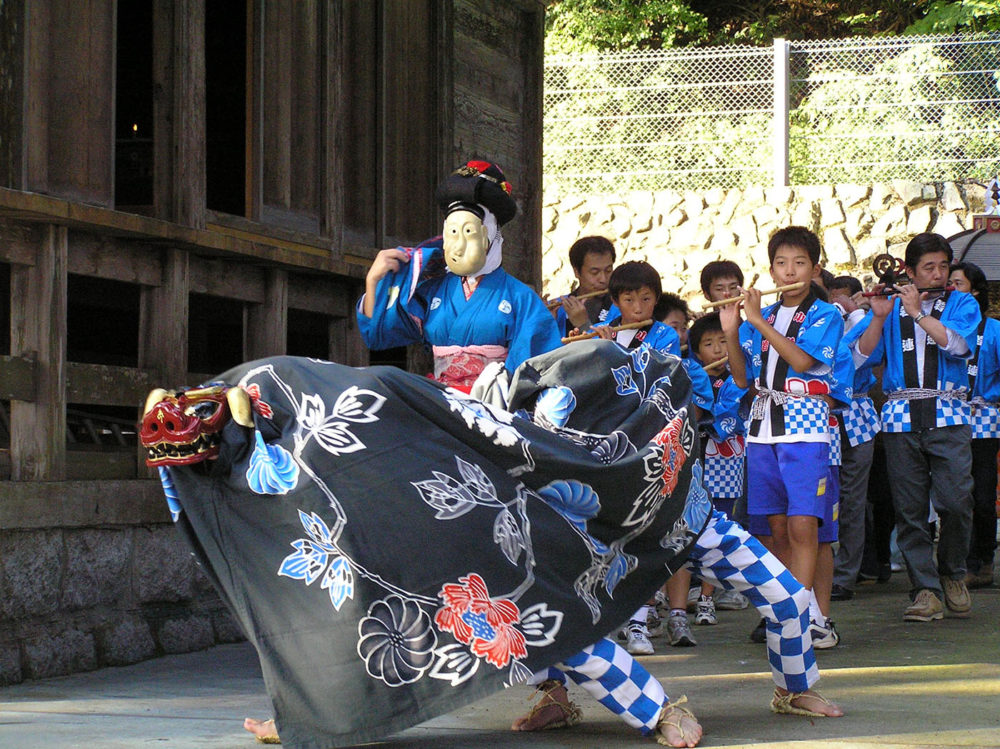
Ogawa-ji Temple lion dance [ Uozu city ], a prefecturally designated intangible folk cultural property
Wooden Lion Head [ created in 1481 ], a prefecturally designated tangible cultural property
The gyodo-jishi liondance is a style in which the lion leads the procession without dancing. This is believed to be an older style dating to the Middle Ages [ 15th-16th century ]. The lion wears a flat, rectangular head called the hako-jishi and proceeds using slow movement. The Ogawa-ji Temple lion dance is considered the most archetypal form of the gyodo-jishi lion dance.The geino-jishi dance includes the mukade-shishi, where several people form a line resembling the lion's belly, and the ninindachi-shishi, where just two people perform together.
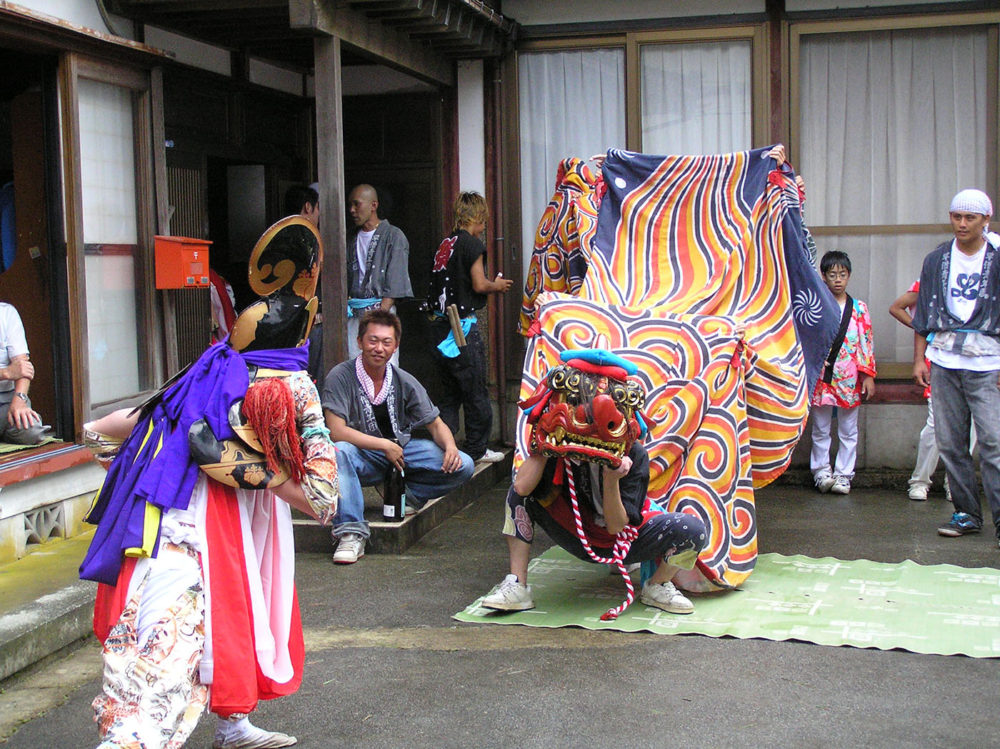
Mukade-shishi [ Hayakashi, Himi city ]
The premise is that goblins dressed in hunter's clothes seek to drive out the lion. Flutes and drums play at a fast tempo as the goblins and lions dance in a rhythmic and intense way, creating a dazzling performance.
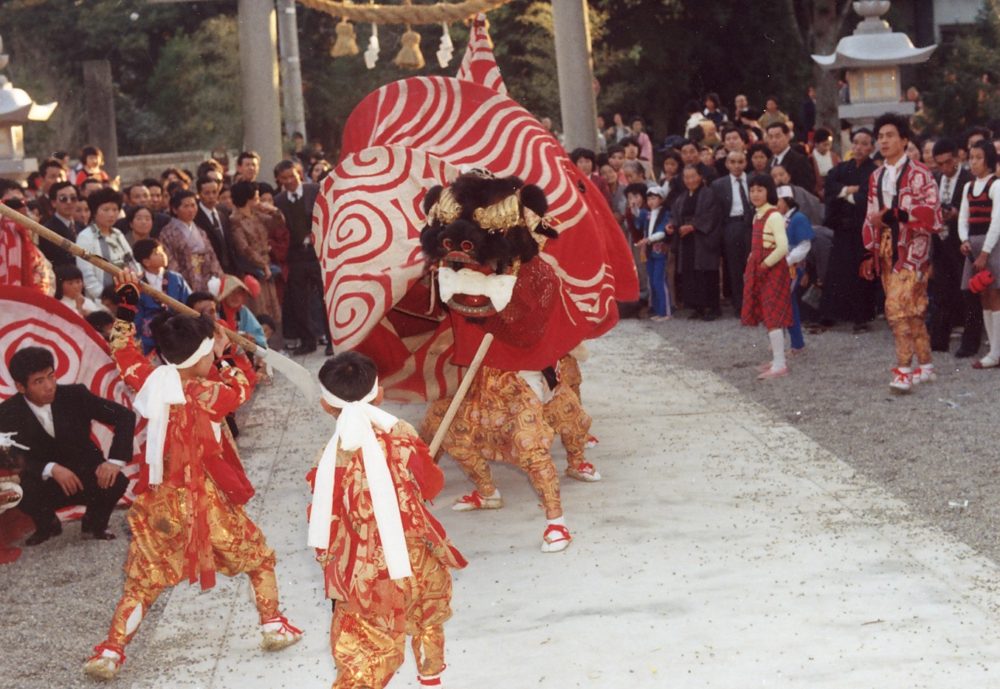
Mukade-shishi [ Ranjo, Tonami city ]
The mukade-shishi consists of a body covering passed through a bamboo ring, and the lion dances with dynamic movement. Children use rods and polearms with curved blades to rhythmically "do battle" with the lion.
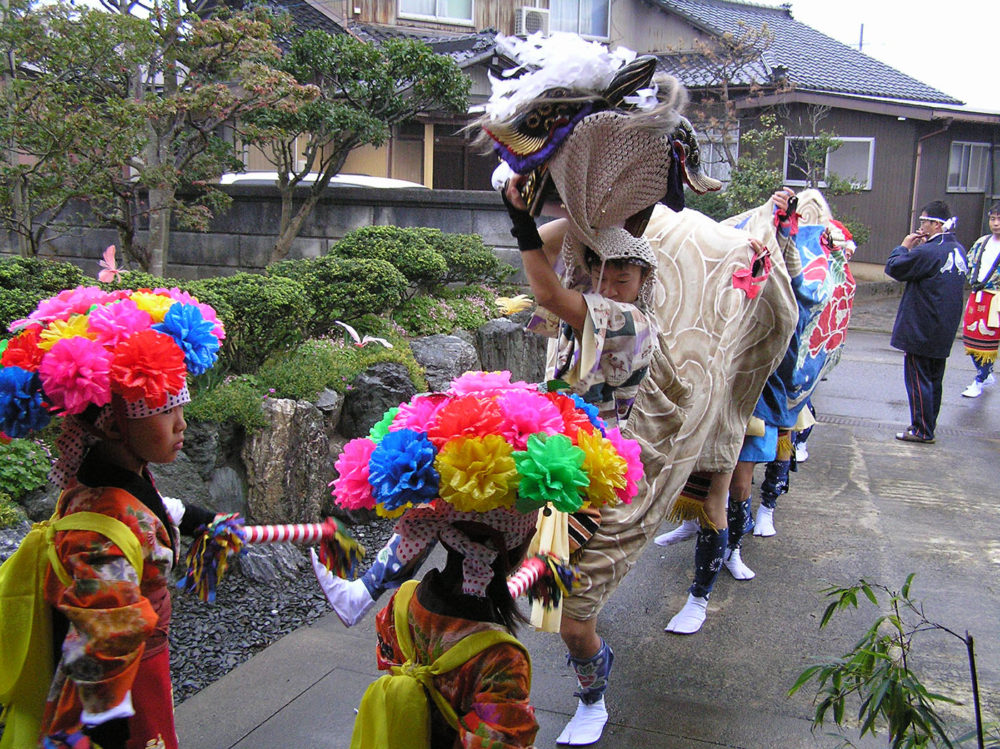
Mukade-shishi [ HoriokaShinmyojin, Imizu city ]
The lion dance in Imizu takes the form of the lion supporting the cloth with its own hands in order to exaggerate its shape. Children wearing hat adorned with flowers and goblin masks attempt to quell the beast.
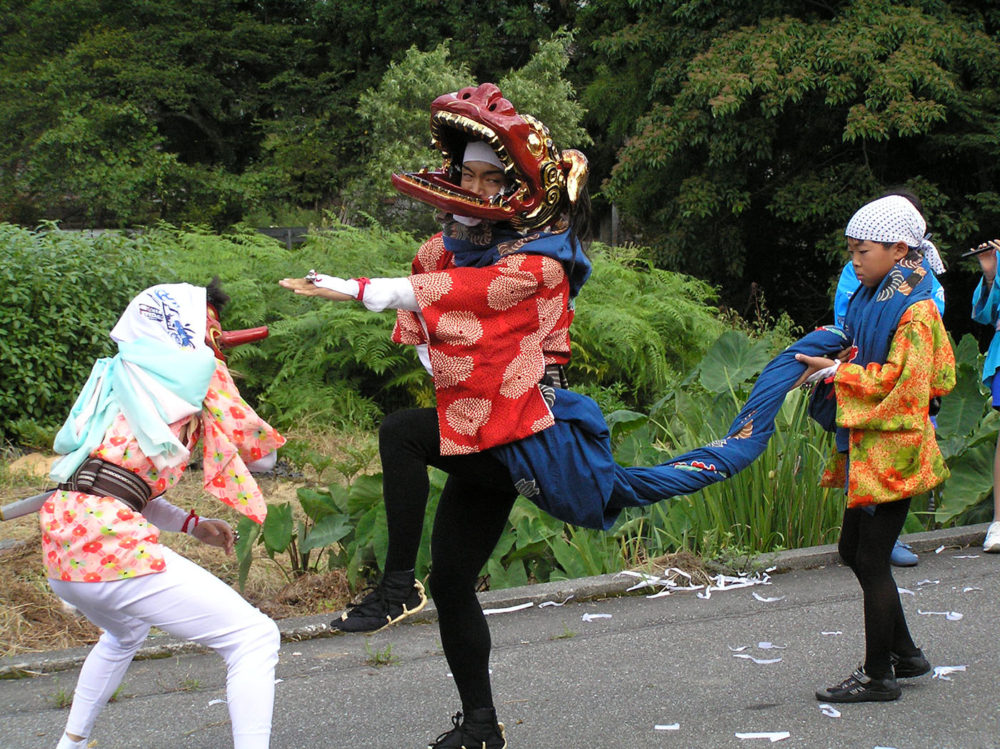
Ninindachi-shishi [ Sasagawa, Asahi Town ]
Two people get behind the curtain on the lion and act as the front and back legs. This is referred to as the ninindachi-shishi, and is accompanied by large groups of people in goblin masks.
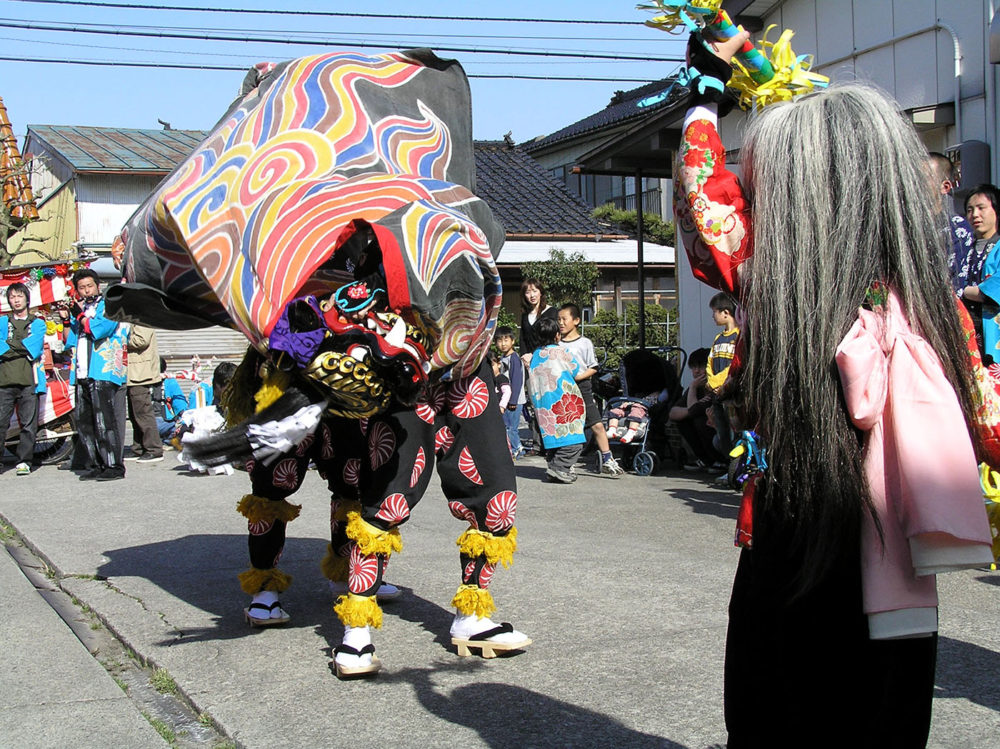
Kinzo-shishi [ Tomisaki Fuchu-machi, Toyama city ]
In days gone by, a young boy called Kinzo drove away a ferocious lion that threatened the crop fields. The villagers rejoiced, and enshrined him as a god. For the shrine's annual festival, the lion dance is performed as a prayer for a bountiful harvest and safety of families.
